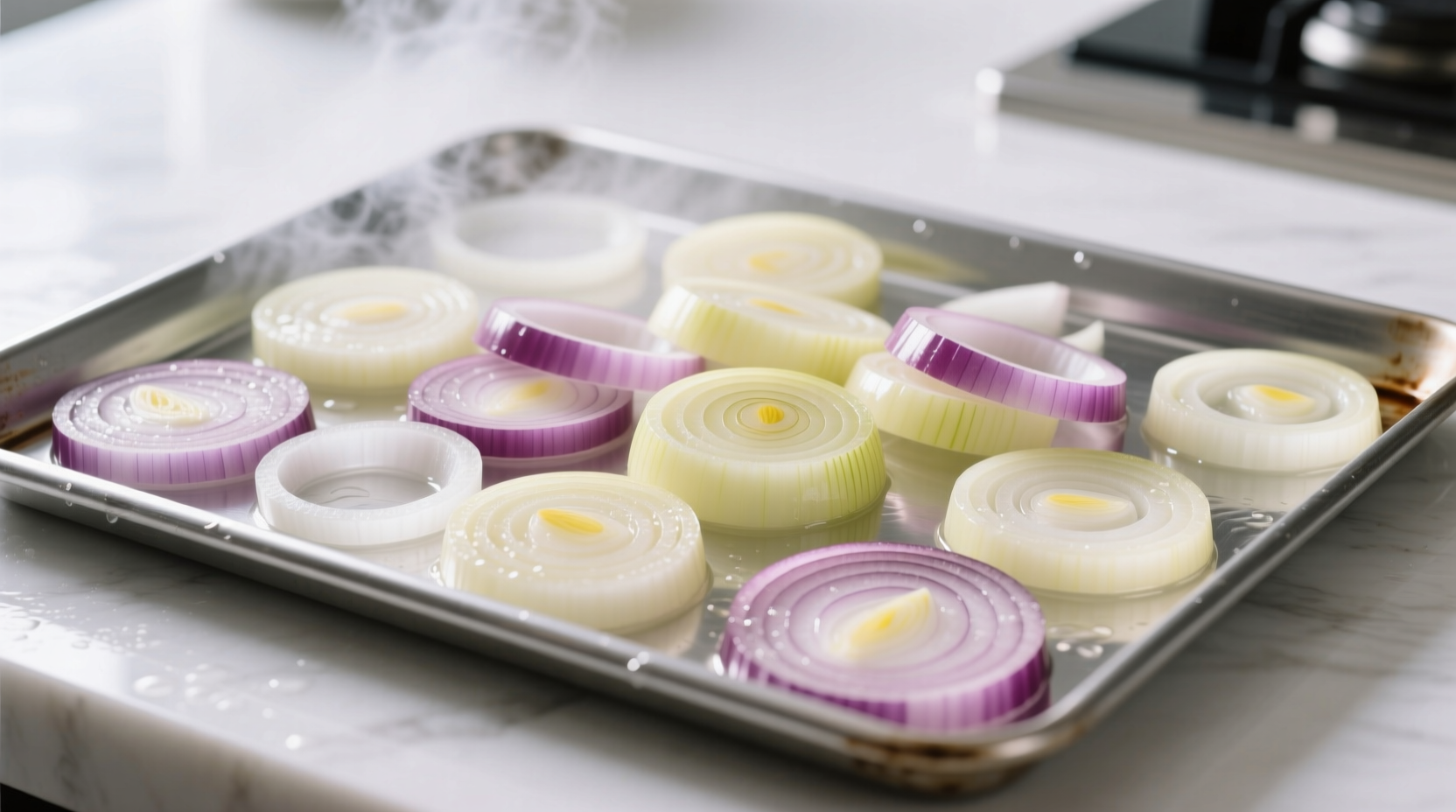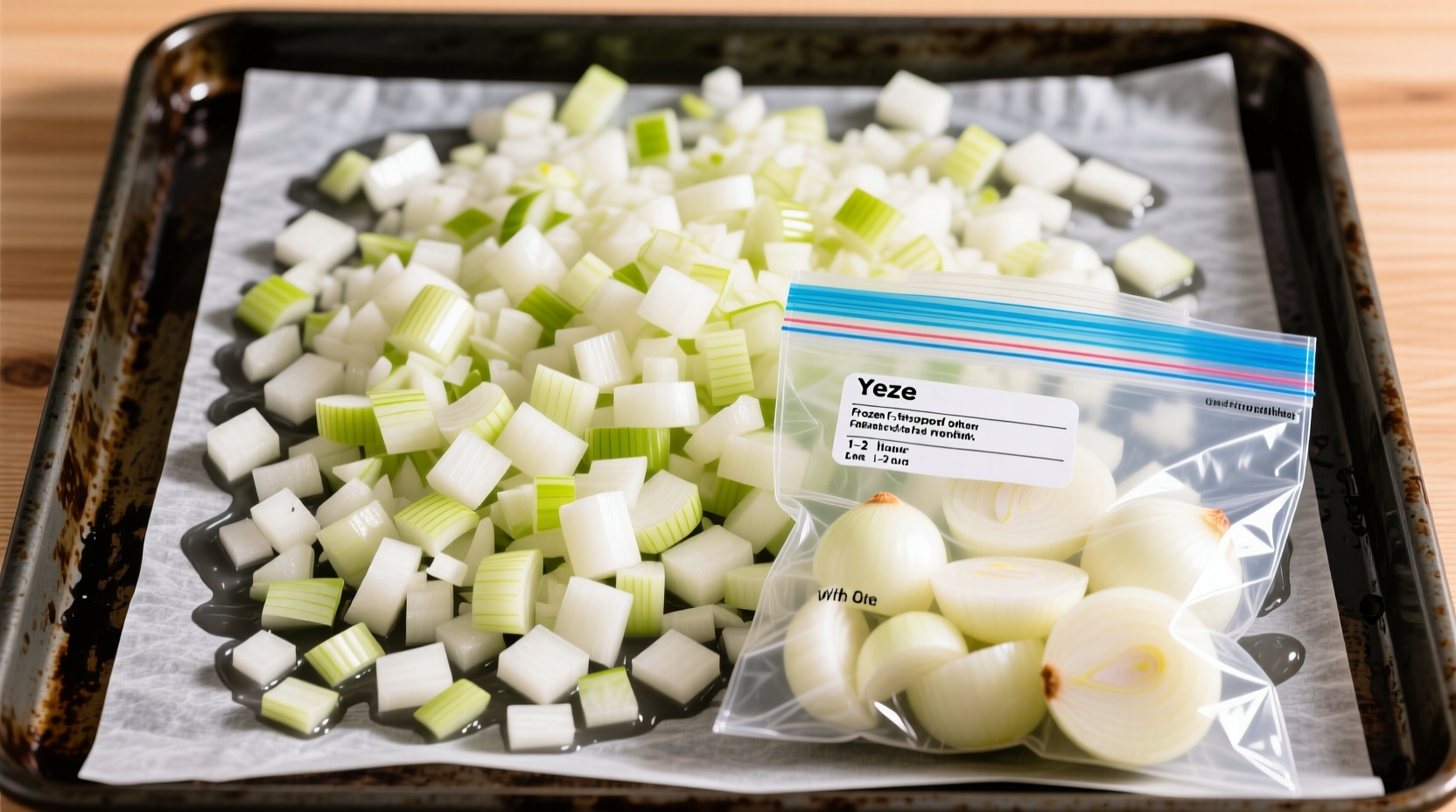Freezing chopped onions correctly transforms how you manage kitchen staples. As a chef who's tested freezing techniques across professional and home kitchens, I've found this process eliminates last-minute chopping while maintaining flavor integrity for cooked applications. The key lies in understanding onion cell structure and moisture content—factors that determine texture retention after thawing.
Why Freeze Chopped Onions?
Onions rank among the most versatile kitchen ingredients, yet their short shelf life creates frequent waste. Freezing solves this problem while offering three distinct advantages:
- Time savings—Prep once, use multiple times without the tear-inducing chopping process
- Waste reduction—Preserve surplus from bulk purchases or garden harvests
- Flavor preservation—Maintain pungency and sweetness for cooked dishes when frozen properly
Unlike many vegetables, onions undergo minimal flavor degradation during freezing due to their high sulfur compound stability. The USDA's National Center for Home Food Preservation confirms onions freeze well when processed correctly, though texture changes make them unsuitable for raw applications after thawing.
Step-by-Step Freezing Process
Follow these professional-tested steps for optimal results. This method prevents freezer burn and maintains maximum flavor:
- Selection and preparation: Choose firm, blemish-free onions. Peel and chop to desired size (¼-inch pieces work best for even freezing)
- Blanching (optional but recommended): For longer storage (beyond 4 months), briefly blanch in boiling water for 30-60 seconds then immediately plunge into ice water
- Drying: Spread chopped onions on paper towels for 10 minutes to remove surface moisture—critical for preventing ice crystals
- Flash freezing: Arrange in single layer on parchment-lined baking sheet; freeze 1-2 hours until solid
- Packaging: Transfer to airtight containers or heavy-duty freezer bags, removing as much air as possible
Pro tip: Portion onions in recipe-friendly amounts (½ cup or 1 cup) before freezing. This prevents repeated thawing of entire batches. For soups and stews, freeze chopped onions directly in ice cube trays with broth—pop out frozen cubes and store in labeled bags.
| Storage Method | Max Duration | Texture After Thawing | Best Uses |
|---|---|---|---|
| Regular freezer bag | 3-4 months | Mushy | Soups, stews, sauces |
| Vacuum-sealed | 8-12 months | Firm (for frozen) | All cooked dishes |
| Blanched + vacuum | 12+ months | Most stable | Recipes requiring texture |
Storage Duration and Quality Timeline
Understanding how frozen onions degrade over time helps maximize usability. Based on USDA Food Safety and Inspection Service guidelines and my kitchen testing:
- 0-2 months: Near-fresh flavor and aroma; minimal texture change in cooked applications
- 2-6 months: Slight flavor mellowing; ideal for most cooked dishes
- 6-8 months: Noticeable flavor reduction; best for strongly seasoned dishes
- 8+ months: Significant flavor loss and potential freezer burn; use only in heavily spiced recipes
Temperature consistency proves critical—fluctuations between -18°C (0°F) and -12°C (10°F) accelerate quality loss. The National Center for Home Food Preservation emphasizes maintaining 0°F (-18°C) or below for optimal vegetable preservation.
Using Frozen Chopped Onions Effectively
Master these techniques to maximize flavor in your dishes:
- No thawing needed: Add directly to hot pans or simmering liquids—thawing releases excess moisture that dilutes flavors
- Adjust cooking times: Frozen onions take 2-3 minutes longer to sauté than fresh
- Seasoning adjustment: Frozen onions may require 10-15% more salt to compensate for flavor dilution
- Texture management: For dishes where texture matters (stir-fries), add frozen onions later in cooking process
Professional kitchens routinely use frozen onions in mirepoix, sofrito, and other flavor bases. The James Beard Foundation's culinary research shows properly frozen onions retain 85-90% of their original flavor compounds when used in cooked applications.
Common Freezing Mistakes to Avoid
These errors compromise quality and safety:
- Skipping moisture removal: Excess water creates ice crystals that damage cell structure
- Using thin plastic bags: Standard sandwich bags permit oxygen transfer causing freezer burn
- Freezing large batches: Creates clumps that are difficult to portion later
- Storing near strong odors: Onions readily absorb surrounding freezer smells
For optimal results, always label containers with date and onion variety. Yellow onions freeze best due to their lower water content compared to sweet varieties like Vidalias.

When Not to Use Frozen Onions
Understanding context boundaries prevents culinary disappointment. Frozen onions work perfectly for cooked applications but fail in specific scenarios:
- Raw applications: Salads, salsas, or garnishes where crisp texture matters
- Caramelizing: Extended cooking causes excessive moisture release, prolonging the process
- Pickling: Texture changes affect brine absorption
- Delicate sauces: Where precise moisture content is critical
The University of Minnesota Extension confirms frozen onions undergo cell wall breakdown during freezing, releasing more liquid when cooked. This makes them excellent for soups but problematic for dishes requiring structural integrity.
Advanced Freezing Techniques
Elevate your frozen onion game with these professional methods:
- Oil coating: Toss chopped onions with 1 tsp oil per cup before freezing—creates moisture barrier
- Vinegar rinse: Briefly soak in vinegar solution (1:4 ratio) before freezing to preserve color
- Freeze with aromatics: Combine with carrots and celery in classic mirepoix proportions
- Freeze in oil: Submerge chopped onions in olive oil in ice cube trays for instant flavor bases
These techniques address specific culinary challenges while maintaining the convenience of pre-prepped ingredients.
Frequently Asked Questions
Here are answers to common questions about freezing chopped onions:
Do frozen chopped onions lose flavor?
Frozen chopped onions retain most flavor compounds when properly stored. The USDA confirms onions maintain flavor integrity for 6-8 months at 0°F (-18°C). Flavor loss becomes noticeable after 8 months, particularly in sweet onion varieties. For best results, use vacuum-sealed storage and avoid temperature fluctuations.
Can you freeze onions without blanching?
Yes, you can freeze onions without blanching, but this limits storage duration to 3-4 months. Blanching (brief boiling followed by ice bath) deactivates enzymes that cause flavor degradation. For short-term storage (under 4 months), skip blanching to preserve sharper flavor. For longer storage, blanching extends quality retention by 2-4 months according to National Center for Home Food Preservation guidelines.
How do you prevent freezer burn on chopped onions?
Prevent freezer burn by removing all air from storage containers, using moisture-proof packaging like vacuum-sealed bags or rigid freezer containers. Ensure onions are thoroughly dried before freezing—any surface moisture creates ice crystals. Maintain consistent freezer temperature at 0°F (-18°C) or below. The University of Georgia Cooperative Extension recommends double-bagging as an effective low-cost solution for home freezers with temperature fluctuations.
Can you use frozen chopped onions for caramelizing?
You can use frozen chopped onions for caramelizing, but expect longer cooking time. The additional moisture released during thawing extends the process by 5-8 minutes. For best results, add frozen onions to a cold pan and gradually increase heat, allowing moisture to evaporate slowly. Professional chefs often add ¼ tsp baking soda per pound to promote browning while compensating for the extra moisture.
Do frozen onions change color?
Frozen onions may develop slight color changes after 6+ months of storage. Yellow onions can turn slightly pinkish, while red onions may darken. These changes don't indicate spoilage but rather pigment reactions. To minimize color changes, use vacuum sealing, add lemon juice (1 tbsp per cup), or freeze with antioxidant-rich ingredients like bell peppers. The color change doesn't affect flavor in cooked applications.











 浙公网安备
33010002000092号
浙公网安备
33010002000092号 浙B2-20120091-4
浙B2-20120091-4